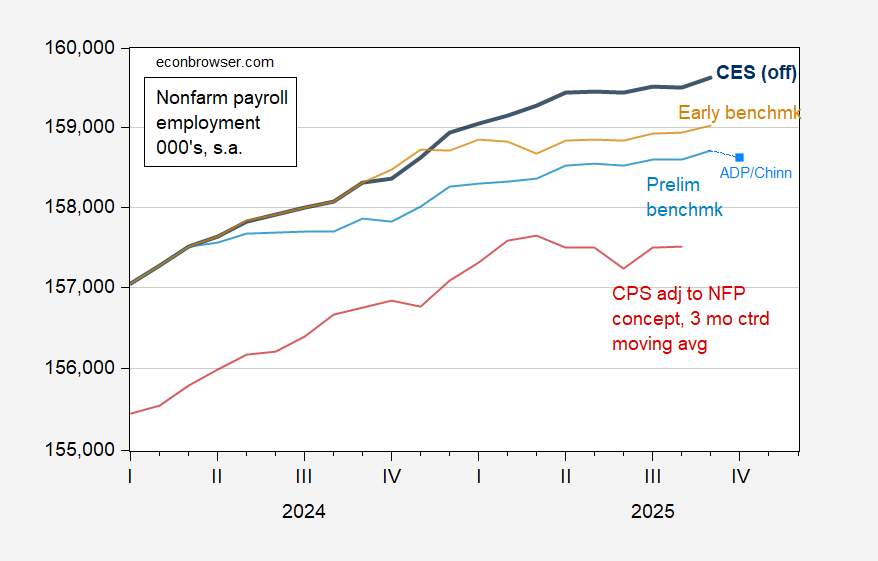That’s today on Meet the Press. I agree that it doesn’t look like we’re in a recession now, given the limited amount of current economic data we have; nonetheless what little employment data we have is not that encouraging.
Figure 1: Three month centered moving average of civilian employment (blue), in 000’s on log scale. April 2020-December 2024 data is with smoothed population controls (period denoted by light shaded blue area). NBER defined peak-to-trough recession dates shaded gray. Source: BLS via FRED, BLS, NBER and author’s calculations.
Note the local maxima are typically before a NBER defined peak (2000M01 precedes 2001M03, 2007M11 precedes 2007M12, 2019M10 precedes 2020M02).
While I warn people about relying on the civilian series for high frequency tracking, it is more useful looking at the implied trends – which is what I’m doing in Figure 1.
It’s also of interest to consider what the various versions of the CES numbers indicate:
Figure 2: Nonfarm payroll employment (official) (bold blue), implied preliminary benchmark revision, with April-September growth equal to official (light blue), Chinn estimate based on ADP data (sky blue square), Early benchmark revision, with extended benchmark growth equal to official (tan), and Current Population Survey civilian employment adjusted to NFP concept, using smoothed population controls, 3 month centered moving average (red), all in 000’s, on log scale. Source: BLS via FRED, BLS, Philadelphia Fed, and author’s calculations.
The methodology to estimate October NFP (implied preliminary benchmark) is described here, except I now use a regression over 2022-2025M09 data to predict 2025M10 private employment, add in 22K and subtract 150K (to account for deferred furlough program effects).
Bessent’s assertion is even more daring than Lazear’s 2001 claim. We’ll see.

